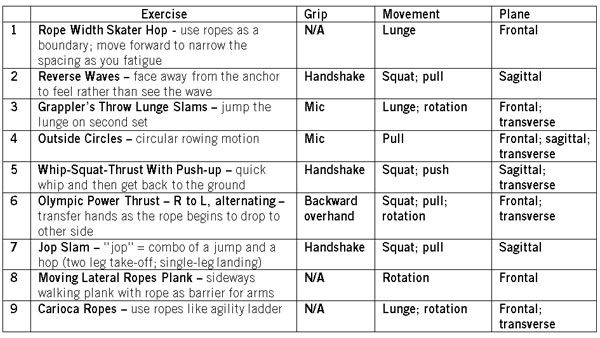Getting a full-body workout without having to run around using different equipment is ideal for those times when you need to be very efficient while still experiencing a challenge. Heavy ropes are a great way to do just that.
Here are three things I love about ropes:
- The visual and sensory feedback provided by the rope is a great indication of the quality of the effort produced by your body.
- It feels like playing even when you are working hard.
- The movement of the rope is a beautiful rendering of physics in action.
In many ways, a heavy rope is a tool we are still trying to figure out how to use most effectively. Unfortunately, the inherent simplicity in using a rope has been unnecessarily complicated by pointless “battling rope certifications,” giving credence to the idea that there’s a lot of technical stuff to know before you can use them effectively. Not so. With just a few helpful tips to keep in mind, you can grab a heavy rope and start enjoying a full-body, ropes-based workout.
Grace of the Wave
When using ropes, consider the “grace of the wave”—the smooth flowing wave that occurs along the length of the rope. Here are a few ways you can use the ropes, with a nod to Ken Weichert of www.startfitness.com:
- Slam – aggressive rope movement with the primary direction of force down toward the ground
- Waves – alternating, asymmetrical pattern with the primary direction of force toward the anchor
- Whip – symmetrical pattern with the primary direction of force toward the anchor
In the following workout, the exercises utilize the heavy ropes in both familiar and novel ways to enhance the benefit and the enjoyment of the workout experience. These exercises also feature the primary movement patterns—squat, lunge, push, pull, rotate—and are multiplanar, moving through the sagittal, frontal and transverse planes of movement for a total-body workout.
Grips
There are two main types of grip used in heavy rope training:
- Handshake (overhand) grip
- Microphone (underhand) grip
When programming, I typically use the more visually expressive terms “handshake” and “microphone” as many people easily get confused on what overhand and underhand means.
The Warm-Up
The objective of the warm-up is to prep the body for the workout and practice the skills used in some of the exercises to follow. Perform one set of each exercise for 30 seconds.
Stationary Side Lunge With Alternating Waves – see and feel the grace of the wave to bring both the mind and body into focus
Rotating Lunge With Overhead Rope Arc – move the ropes from the floor to overhead as you switch sides
The Workout





 by
by 






 by
by